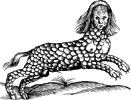Vertebrate Pest Conference: Proceedings

Vertebrate Pest Conference Proceedings: 14th (1990)
Date of this Version
3-6-1990
Document Type
Presentation
Abstract
A questionnaire survey of the National Forests in 1988 indicated that animal damage control (ADC) was conducted on 208,000 acres of reforestation and older stands, nearly all in the West, at a cost of about $9 million. Sixty-two percent of the total acreage treated, or 128,600 acres, and 49 percent of the ADC costs, or $4.3 million, was in the Pacific Northwest Region (Oregon and Washington). Most of the forests in all regions of the Forest Service, except Alaska, rated animal damage to reforestation and older stands as very important or moderately important. One-third of the forests rated damage as increasing, about two-thirds rated damage as about the same, and only 6 percent rated it as decreasing. Damage to forest stands was caused by a wide variety of animals, including livestock, but pocket gophers (Thomomys sp.) were the single most destructive group of species on National Forest System (NFS) lands. More than half the forests reported animal damage to structures and campgrounds or animal-related health hazards such as rodent-borne diseases. Beaver (Castor canadensis) were a minor problem in all regions and were reported as causing damage by about one-third of the forests. In addition to significant and increasing black bear (Ursus americanus) damage to young stands, bear depredations and nuisances were reported by half of the forests in all regions except Alaska. Two-thirds of the forests reported an ongoing need for ADC training. Forests reported ADC research needs in every region except Alaska.

